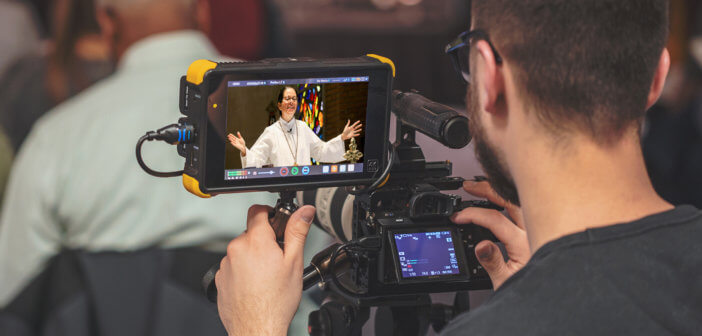As restrictions on gatherings imposed by the COVID-19 crisis begin to ease, congregations are likely to find themselves in a both/and reality. They will need to sustain an enhanced digital presence while at the same time resume normal patterns of gathering. Now is the time to strategize and put teams in place to support the challenges and opportunities of this new normal.
It is not only pastors who are adapting their ways of relating to others during this time of COVID-19. Church staff, congregational leaders, and rank and file members have all adjusted their ways of interacting. Regardless of the size of your church, it’s unlikely that things will simply return to normal when the pandemic ends. So, how can you prepare for the new normal in how people are likely to interact and work together?
Communication
Pre-pandemic, we all made assumptions about being able to connect with one another face to face. In a world of social distancing we can no longer take this for granted. And it may be a while before it’s safe for everyone to be physically present with each other. This means more communication through FaceTime, phone conversations, Zoom, email, etc. It may be quite a while before everyone feels safe being physically present. So multiple forms of communication will be the new normal.
It will be time-consuming to sustain these different layers of communication while also resuming in-person meetings and gatherings. So, now is the time to consider creating a volunteer network to share in this work, especially if your staff is reduced. This might be an ideal opportunity for seniors who can’t get out themselves but could volunteer to stay in touch weekly with a certain group of people.
Online worship
Many congregations have shifted to online worship during the pandemic. And one unexpected but exciting result is that many churches report more people worshiping online than typically attend in-person services! In a study on the initial impact of the COVID-19 crisis on United Methodist Churches, UMCOM found that 48% reported average worship attendance is up compared to pre-crisis times. (See Faith Communities Today: Research & Resources: U.S. Religion During COVID-19.)
To continue to reach new online constituencies, churches see a need to continue to improve their digital outreach even as they resume sanctuary worship. The new normal will involve being both a gathered and a scattered worshiping community. Once the pastor and other worship leaders turn their attention back to in-person worship, the key question will be whether the church can maintain a high-quality online worship presence. Now is the time to strategize and put the necessary teams in place.
Bible studies and groups
The same is true for Bible studies and other groups that have shifted to an online format. Even if some individuals decide to come on Sunday to worship, they still may prefer to study virtually. Just letting them overhear an in-person study is not sufficient. For many pastors it will not be possible to continue the virtual studies and plan the in-person studies. Training the right staff person or finding the right volunteer who can keep this going will be important. Start this process now so that you will be ready when the time arrives.
Potential staff realignment
As an unfortunate consequence of the pandemic, some congregations may have to cut staff due to financial pressures. This means the remaining staff may have to cover more ground and you may need to deploy more volunteers. For example, if you have seen a decline in giving and in-person attendance, could you shift from a part-time paid nursery worker on Sundays to a rotating team of appropriately trained volunteers? Thinking about cutting individuals who have helped the congregation to thrive is never pleasant. But starting to make realistic plans now will ensure that no one is caught by surprise and an alternative can be put in place. The hope is to be able to maintain the same staffing, but this will not be possible in all situations.
Redefining community
In all these areas of ministry, one of the biggest adjustments is a very different vision of community. We can no longer think of community as those physically present or even just in our immediate neighborhood. We have to expand our understanding of community to include those who connect virtually but may never attend in person.
The new reality requires that we embrace a both/and mindset rather than an attitude of either/or. A both/and perspective frames community as both physical and virtual. It requires new ways of thinking about meeting the needs of the community. We no longer have the luxury, if you will, of limiting our thinking to either all physical or all virtual. Some larger congregations have embraced this new reality for some time, but increasingly it will be the reality for congregations of all sizes as we live into the new normal.
Related Resources
- Staying Connected in a Time of Social Distancing by Doug Powe
- Digital Church Is Here to Stay by Carey Nieuwhof
- Becoming a Church Without Walls by Andrew Ponder Williams






